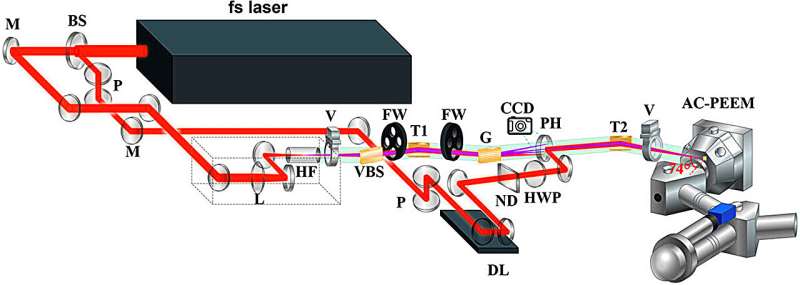This article has been reviewed according to Science X's editorial process and policies. Editors have highlighted the following attributes while ensuring the content's credibility:
fact-checked
proofread
Speeding through the microcosm: Insights into ultrafast electron and lattice dynamics

A study has unlocked new dimensions in understanding the ultrafast processes of charge and energy transfer at the microscale. The research delves into the dynamics of microscopic particles, providing insights that could revolutionize semiconductor and electronic device development.
Understanding the dynamic behavior of microscopic particles is crucial for advancing technologies in various fields, including electronics and materials science. Traditional imaging techniques often fall short in capturing these rapid processes. Given these challenges, there is a pressing need to develop advanced imaging methods that offer high spatial and temporal resolution to uncover the intricacies of electron and lattice dynamics in materials.
A team from the Beijing Institute of Technology, including researchers from the Laser Micro/Nano Fabrication Laboratory, published a comprehensive review on ultrafast electron microscopy (UEM) in the International Journal of Mechanical System Dynamics. This review explores the principles and applications of Electron Microscopy (TR-PEEM), Scanning Ultrafast Electron Microscopy (SUEM), and Ultrafast Transmission Electron Microscopy (UTEM), highlighting their capabilities in studying ultrafast processes in materials.
The review discusses three main UEM techniques: Time-Resolved Photoemission TR-PEEM, SUEM, and UTEM. TR-PEEM utilizes an electron microscope to image the distribution of photoelectron emissions on surfaces, revealing electron energy distribution and surface plasmon dynamics, and has been used to study heterogeneous interfacial electron transfer and ultrafast electron transport in single-crystal materials.
SUEM combines scanning electron microscopy with ultrafast laser pulses to achieve high spatial and temporal resolution, allowing for the observation of carrier dynamics in silicon materials, p–n junction interfaces, and the effects of defect modifications on semiconductor nanowires. This technique is instrumental in understanding the carrier properties influenced by defects, doping, and surface orientation in single crystals.
UTEM offers multiple imaging modes, including real-space, inverse-space, and energy-space, to study lattice dynamics and phase transitions, revealing stress propagation in two-dimensional materials, martensitic phase transformations in metals, and the melting and crystallization processes under destructive excitation.
"Ultrafast electron microscopy represents a significant advancement in our ability to visualize and understand rapid processes at the atomic scale. The insights gained from these techniques are crucial for the development of future technologies in electronics and materials science," said Professor Lan Jiang, a leading researcher in the field from Beijing Institute of Technology.
The advancements in UEM techniques have broad implications for scientific research and industrial applications. By providing detailed insights into ultrafast electron and lattice dynamics, these methods can guide the development of advanced semiconductors, optoelectronic devices, and efficient photocatalysts. Furthermore, the ability to observe real-time processes at the atomic level opens new avenues for exploring fundamental physics, chemistry, and materials science, ultimately driving innovation in various high-tech industries.
More information: Yiling Lian et al, Probing electron and lattice dynamics by ultrafast electron microscopy: Principles and applications, International Journal of Mechanical System Dynamics (2023). DOI: 10.1002/msd2.12081
Provided by Maximum Academic Press

















